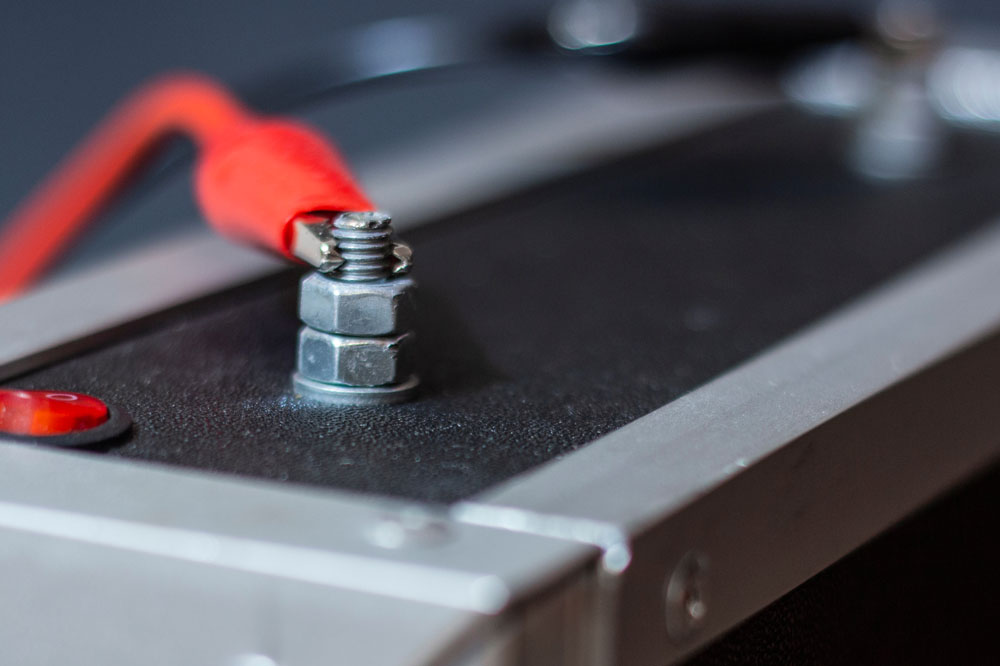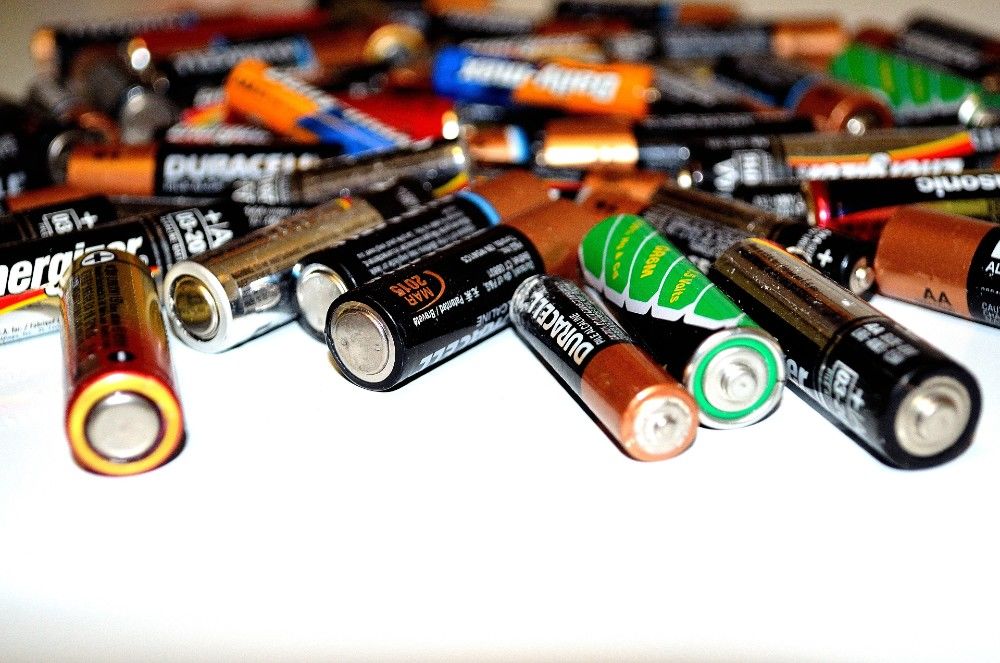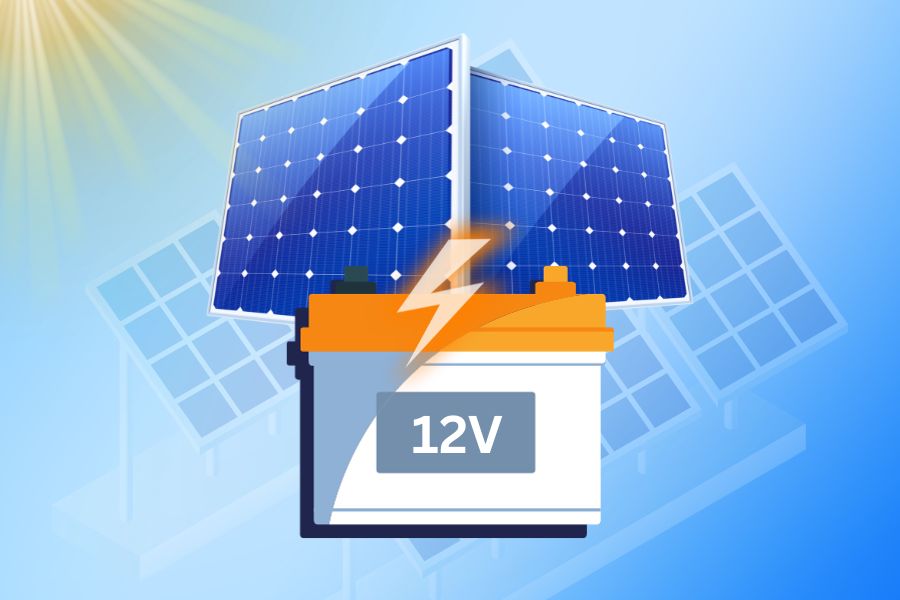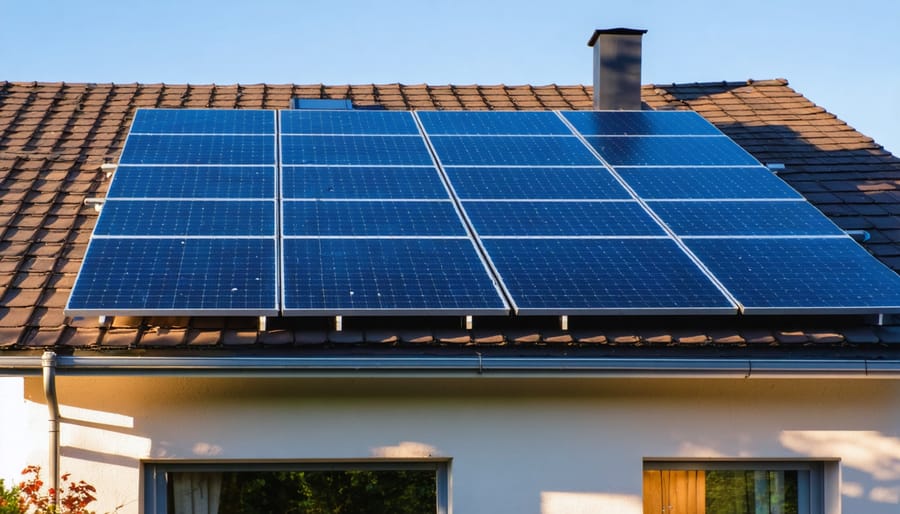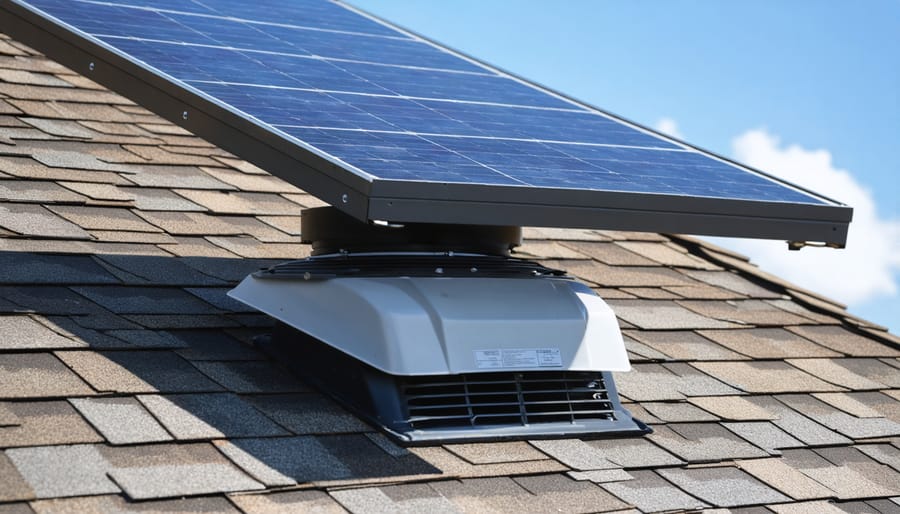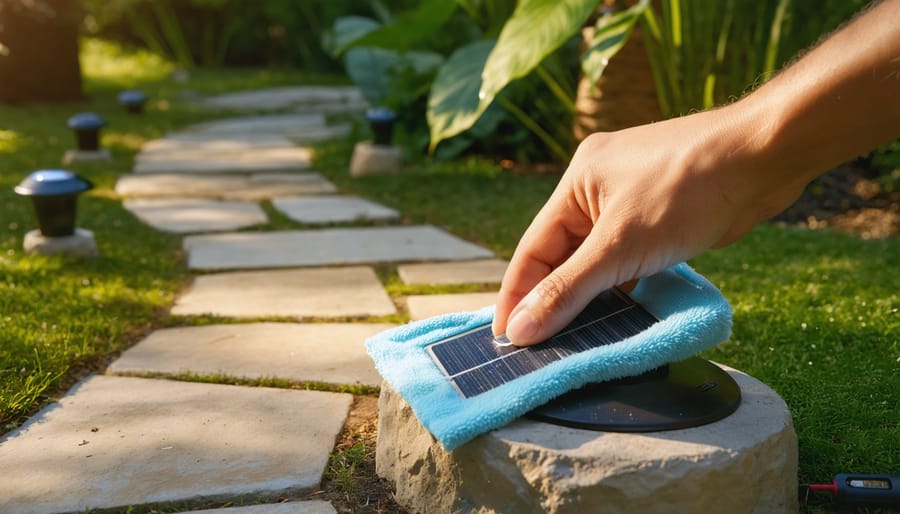How Long Will a 100Ah Battery Run a TV
Updated:

A 100Ah battery’s ability to power a TV depends on the battery chemistry, the TV’s energy consumption, and losses through voltage conversion. The key is calculating the battery’s usable capacity and the TV’s hourly energy draw.
In general, a 100Ah lithium battery can run an LED TV for 15-25 hours while a 100Ah lead acid battery can run an LED TV for 6-12 hours.
Runtimes are shorter for less efficient TV technologies like OLED and older CRT and plasma TVs. Larger screen TVs also use more power, further reducing runtimes.
Below, we compare runtimes for different battery types, review factors impacting runtimes, explain how to calculate battery runtime for a TV and provide tips for maximizing runtime. We also recommend the best batteries for powering TVs and discuss using generators and solar power.
TV Runtime on a 100Ah Battery: Types and Sizes
The amount of power a TV requires has decreased dramatically over the years as new technologies have been developed. Older TV types like CRT and plasma consume much more electricity than modern LED and OLED models.
Here’s a quick comparison of the run-times of different TV technologies and sizes:

Of these, LED TVs are generally the most energy-efficient, followed closely by LCDs.
OLED TVs provide superior picture quality, but use more power than LEDs.
Old CRT and plasma TVs are very outdated technologies that draw huge amounts of electricity.
Effect of Battery Type on TV Run-time
The run-time of your TV on a 100Ah battery also greatly depends on the battery type. There are two main types of deep-cycle batteries to choose from:
Lead-Acid Batteries
Lead-acid batteries include AGM, gel, and flooded cell designs optimized for deep discharge applications.
Pros:
- Inexpensive purchase cost
- Widely available
Cons:
- 50% usable capacity
- Short life span – approximately 500 cycles
- Heavyweight
- Degrades faster in heat
- Requires ventilation
- Loses capacity as voltage drops
Lithium-Ion Batteries
Lithium chemistries like LiFePO4 are engineered for maximum cycle life.
Pros:
- 80-100% usable capacity
- High cycle count – often 2,000+ cycles
- Lightweight
- Steady voltage delivery
- Low self-discharge
- Handles temperature extremes
Cons:
- More expensive upfront cost
- Advanced chargers/controllers needed
Due to their higher usable capacity, a 100Ah lithium battery will run a TV about 2x longer than a similarly rated 100Ah lead acid battery.
For example, a 100Ah lithium battery could run a 50-watt LED TV for around 35 hours. The same TV would run for only 15-20 hours on a 100Ah lead acid battery before needing to be recharged.
Below are some estimates for how long a 100Ah lead acid or lithium battery can run different-sized LED TVs:

These calculations assume:
- LED TVs (most efficient option)
- 50% DoD for lead acid battery
- 100% DoD for lithium battery
- 85% inverter efficiency
As you can see, the lithium battery provides 2x the runtime across all TV sizes. And with small, low-power TVs, runtimes of 20+ hours are achievable.
Key Factors Influencing Runtime
There are several variables that determine precisely how long your 100Ah battery will run a TV before needing a recharge. The main factors are:
- TV Power Consumption – The total watts the TV uses based on its technology, screen size, features enabled, brightness setting, etc. Higher wattage equals faster battery drain.
- TV Usage – How many hours per day the TV is turned on. More hours of use per charge cycle means faster battery drain.
- Battery Type – Lead-acid vs lithium, as previously discussed.
- Battery Age and Condition – Older, worn batteries provide less usable capacity. Poor maintenance also reduces overall capacity.
- Ambient Temperature – Both batteries and TVs perform worse in very cold/hot temps.
Monitoring the battery voltage and amp draw with a battery monitor can provide real-time visibility into the impacts of these variables.
Calculating Your TV’s Runtime on a 100Ah Battery
Figuring out precisely how long your TV will run on a 100Ah battery requires a simple calculation using the TV’s power consumption. Here is the method:
- Look up and note the power draw of your TV. We’ll talk more about this in the next section.
- Multiply the wattage by 0.85 to account for approx. 15% power loss through the DC-AC inverter.
- Take the usable capacity of your battery in amp-hours and convert it to watt-hours by multiplying it with the battery voltage.
- Divide the usable capacity of the battery by the adjusted TV wattage from step 2.
- The result is the estimated runtime in hours.
You can then use the formula:
\(Runtime\ in\ hours = \displaystyle {\frac {Battery’s\ Usable\ Capacity\ in\ Wh}{TV’s\ power\ rating\ in\ watts * 0.85}}\)
The 0.85 accounts for 15% inefficiency from the power inverter needed to convert DC battery power to AC power for the TV.
Let’s walk through an example calculation.
Consider an LED TV, that consumes 60W of power, connected to a 12V 100Ah lithium iron phosphate battery with a usable capacity of 1200Wh (12V x 100ah with 100% depth of discharge).
- TV’s power rating: 60W
- Battery’s usable capacity: 1200 Wh
- Inverter efficiency: 0.85
Plugging this into our formula:
\(\displaystyle {\frac {1200 Wh}{60W * 0.85}} = 17\ hours\)
So our 100Ah lithium battery can run this 32″ LED TV for about 17 hours.
Next, we’ll explain how to determine an important parameter in this calculation: the TV’s energy use.
Determining TV Energy Consumption

A TV’s energy consumption depends on:
- Screen size
- Display technology (LED, OLED, LCD, etc.)
- TV model and efficiency
You can determine your TV’s power consumption using one of these three methods:
- Check the Specifications Label: On the back of your TV, look for a specifications label that provides the power rating in Watts.
- Use the EnergyGuide Label: The EnergyGuide label estimates the TV’s annual energy consumption in kWh, assuming 5 hours of daily use. With this, calculate your TV’s power using the following power:
\(\displaystyle {\frac {Annual\ kWh}{5\ hrs/day * 365\ days}} = TV’s\ power\ usage\ in\ watts \)
For a TV with a 94.3 kWh/year rating, the hourly energy use is:
\(\displaystyle {\frac {94,300\ Wh}{5\ hrs/day * 365\ days}} = 51.67\ watts \)
- Use a Multimeter: You can use a multimeter to measure the actual power draw of your TV.
Battery Sizing Recommendations
Based on typical TV power consumption figures, here are our recommendations for 100Ah battery sizes to power different TV configurations:
Small TVs (24″ or smaller):
- 100Ah lithium or 200Ah lead-acid battery
Medium TVs (32″ – 50″):
- 200Ah lithium or 400Ah lead-acid battery
Large TVs (55″ and up):
- 300Ah+ lithium or 500Ah+ lead-acid battery
These sizes will provide all-day runtime for moderate TV usage. Plan to size up if you’ll be watching many hours per day. And always monitor the battery voltage to avoid over-discharging.
Lithium batteries are the best long-term investment, but lead acid works if runtime demands are low. Adding batteries in parallel expands capacity and runtimes.
Tips for Maximizing TV Runtime
Here are some tips to maximize how long your 100Ah battery can run a TV:
- Use a small, energy-efficient LED TV
- Operate the TV in a warm environment
- Recharge the battery after 50% discharge (for lead acid batteries)
- Enable battery protection and eco-mode features
- Choose the correct voltage cutoff settings for the battery type
- Limit brightness and features like Bluetooth
- Disconnect devices and cables when not in use
- Maintain and check batteries before long runtimes needed
Careful system design, proper usage habits, and battery maintenance are key to optimizing runtimes. Monitor and test your system to find the best balance for your needs.
Using Generators and Solar to Power TVs
While this article focuses on powering TVs from batteries, generators, and solar panels can also run TVs directly or recharge batteries:
Generators

Gas-powered portable generators provide continuous AC power to a TV either directly or via a battery-charging inverter.
Opt for an inverter generator designed to safely handle sensitive electronics like TVs. Conventional generators can damage electronics with “dirty power.” Inverter generators put out clean sine wave power.
Check that the generator has total harmonic distortion (THD) of less than 3%. Lower is better. Higher THD can damage TV components over time. 3% or less THD is generally safe.
Generator Sizing
You will likely use the generator to power additional appliances besides your TV. Choose a generator rated for at least 30-50% more capacity than the required power consumption.
This prevents overload and allows the generator to operate efficiently.
But one issue with generators is their limited fuel capacity. For long-term power, solar charging is preferable.
Solar Panels
Solar panels paired with batteries provide renewable TV power. During the day, solar charges the battery running the TV. Adding 200W+ of solar can indefinitely run a small battery-powered TV.
Ideally, size the solar array to match the daily power needs of the TV.
For a 60-watt TV running 6 hours per day:
\(60\ watts * 6\ hours = 360\ watt-hours\ per\ day\)
Select an array that can produce this amount of energy in an average day for your location. Include a 20-30% buffer to account for inefficiencies and low sun days.
With the strategic use of generators and solar panels, battery runtimes can be extended indefinitely. But for basic battery runtime calculations, the key factors remain battery capacity and TV power consumption.
Frequently Asked Questions
Which Type of TV Consumes the Most Power?
Old CRT tube TVs are the least efficient, using 2-3 times more power than an equivalently sized modern LED TV. OLED and plasma also consume more power than standard LCD and LED.
What Battery Can Power a TV?
Any 12V lithium or lead acid deep-cycle battery can power a TV. Lithium batteries will provide the longest and greatest number of runtimes.
But a large 200Ah+ lead acid battery can also provide sufficient runtime at a lower upfront cost.
How Many Amps Does a TV Draw From a 12V Battery?
Amperage draw depends on the wattage. For example, a 50-watt, 12V LED TV will pull around 4 amps (50W / 12V = 4A). Higher wattages will draw proportionally more amps.
What Is the Best Battery for Running a TV Off-Grid?
For maximum runtime, lithium batteries are ideal for powering TVs off-grid.
Safe to discharge to 20% or lower, they provide about twice the usable capacity per charge compared to lead-acid batteries.
Can I Damage My Car Battery by Using It to Run a TV?
Yes, you can potentially damage a car battery by repeatedly running it down by powering a TV. Car batteries are designed to deliver short bursts of high power for engine starting.
Deep-discharging car batteries can greatly shorten their lifespan. Use proper deep-cycle batteries instead.


